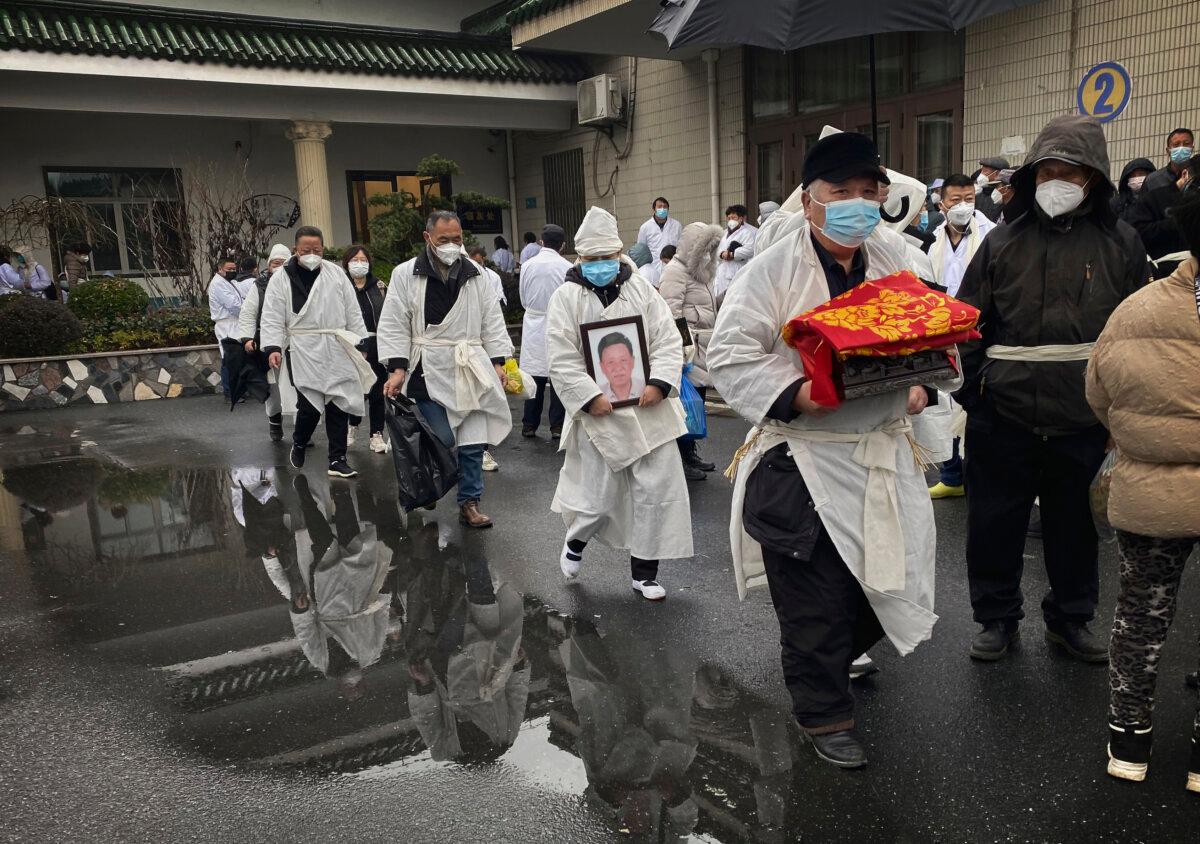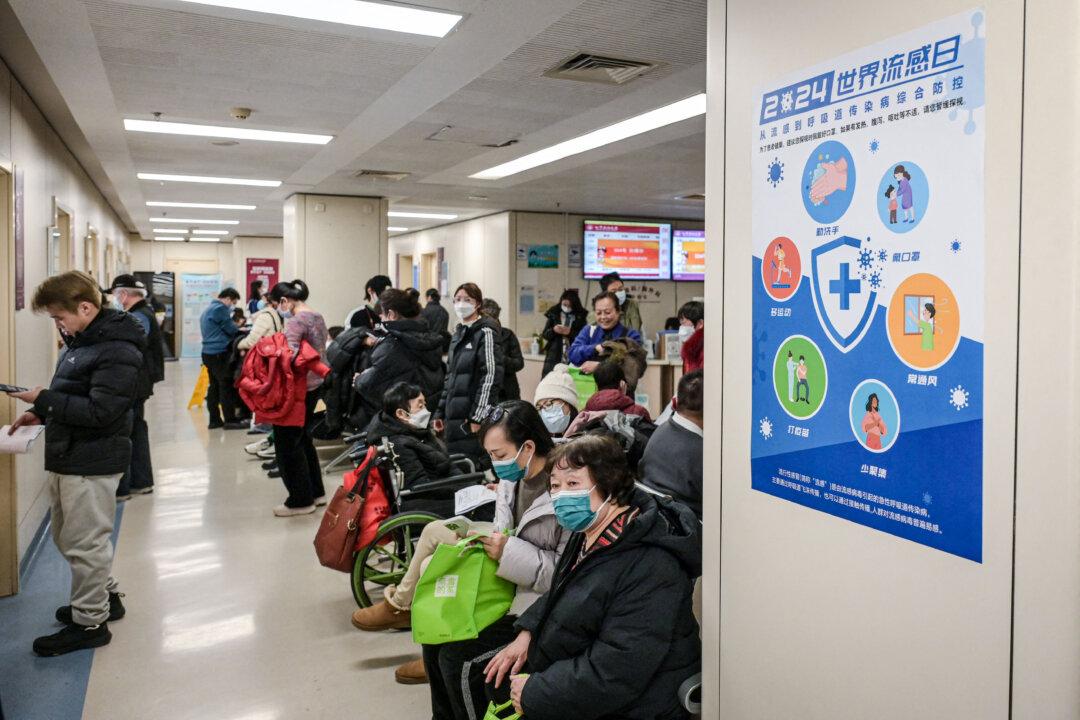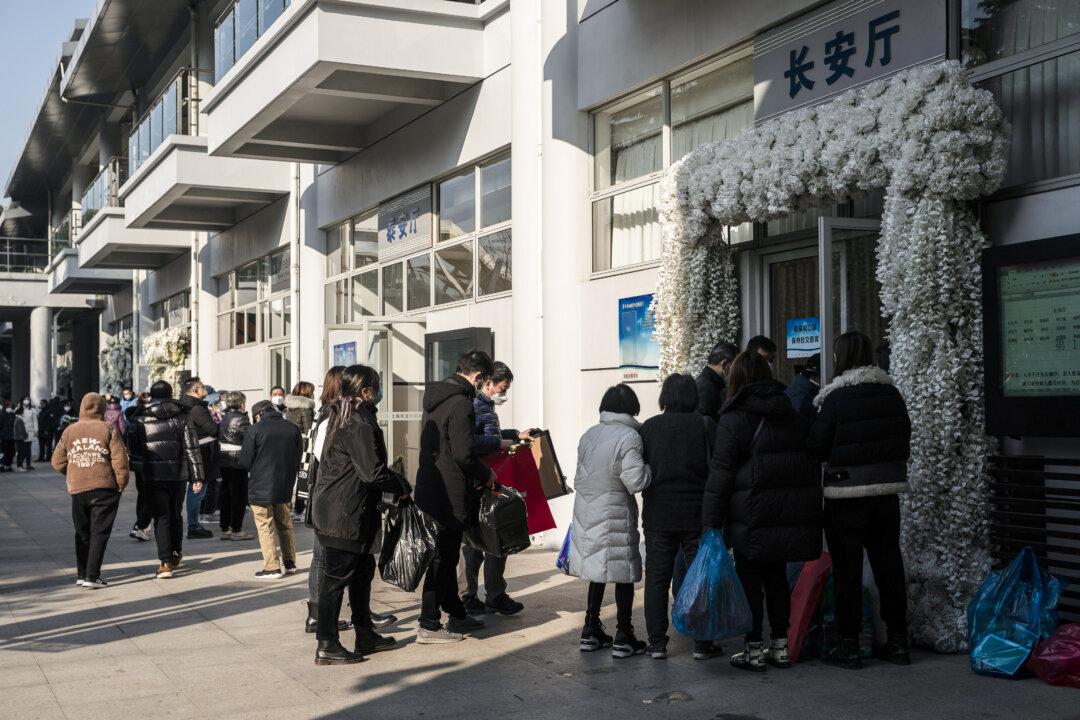Chinese residents across the country continue to reveal on social media and to The Epoch Times that amid ongoing respiratory infections and overcrowding at local hospitals and crematoriums, China’s villages, towns, and even streets in the big cities are looking eerily empty.
Since the outbreak of COVID-19 in China’s Wuhan, a wave of mass respiratory infections has appeared across China almost every year. Because of the regime’s record of publishing unreliable data, including its underreporting of COVID-19 infections in early 2020, analysts and the public often rely on anecdotal stories and evidence.
Mr. Chen, a truck driver in Fujian Province in southeast China who only gave his last name for safety reasons, told The Epoch Times that in the past two years, many people he knows have died. He said he has heard from many of his acquaintances that the situation is similar all over the country.
Early in the pandemic, the nation’s funeral homes were operating at full capacity but unable to keep up with demand. The authorities then expanded and renovated the nation’s funeral homes, and the speed of cremating corpses increased after the renovation, Chen said.
He said that two or three years ago, there were too many bodies waiting for cremation and not enough furnaces to cremate them. “At that time, when sending off relatives, you had to queue for several days, or even half a month to a month.”
In the last few years, Chen said, the number of deaths seen in China remains concerning. Now, many of his relatives and friends have passed away.
He compared it with the past. “Only one friend died in ten to twenty years,” he said. “In recent years, I have seen funerals happening everyday. I often drive outside and [always] see hearses.”
Regarding the claim by China’s ruling communist party (CCP) that China has a population of 1.4 billion, Chen said that the official data is not credible.
Mr. Li, a villager in Zhoukou of Henan Province in north China who only gave his last name for safety reasons, told The Epoch Times that in recent days, local hospitals have all been overcrowded with patients and that many people have died from conditions like pneumonia, heart attack, and ischemic stroke.
Most of the deceased were otherwise healthy-appearing individuals in their thirties or forties, he said.
He said that in recent years, local villages with populations of around 500 to 600 people have reported many deaths. Some people died before they could be sent to the hospital, he said of their condition.
“Poor people are like ants, they die and are buried quietly. Their families cannot afford the cremation. This kind of situation is too common nowadays,” he said.
Ms. Tan, a resident of Tonghua in Jilin Province in northeast China who only gave her last name for safety reasons, told The Epoch Times that her daughter brought her child, who was sick, to the hospital for treatment in recent days and found that the local hospital was overcrowded with patients, and has been so for the last few weeks. She also said her friend who attended a relative’s funeral in early April told her that crematoriums remain overcrowded.
Tan said that many people died in recent months in her sister’s neighborhood, including people in their 40s, 50s, and 60s.
What Is China’s Real Population?
A large number of videos shot by Chinese residents have emerged on social media in recent months showing many abandoned towns and villages across the country and empty streets in the big cities, with people questioning China’s real population in 2025.“That is, China’s overall population has experienced a huge cliff-like plunge within just a few short years—only this can fully and reasonably explain people’s observations,” he said.

During the CCP’s “zero-COVID” lockdowns from 2020 to the end of 2022, Tang said the number of people who died from the epidemic in China was already very huge.
China’s official total COVID-19 death toll in February 2023 stood at 83,150. For the same period, India reported a confirmed death toll that was magnitudes higher, at 531,794, with the government warning it believes there were many more deaths that went unreported due to undertesting in its 1.4 billion population—similar to China’s population claims at the time.
For the same period, the United States, with its well-tested population of 343.48 million, reported 1.1 million confirmed deaths—the most of any nation.
In 2025, China’s data shared with the World Health Organization put its official death toll at 122,398. India’s confirmed death toll is 533,662, and the United States has confirmed 1.22 million deaths.
Every wave of such an outbreak has caused a large number of deaths in China, Tang believes. “The Chinese Communist government is covering up the number of deaths.”
Some noted in recent videos that when China reported having 1.2 billion people in the early 2010s, both China’s villages and cities were much more crowded, packed with people as far as the eye can see. However, this isn’t the case now with the CCP’s claims of a 1.4 billion population.
As for why China’s fast-shrinking population is only now catching the Chinese people’s attention, Tang said, “There’s a delayed effect to the large-scale disappearance of the population. It takes some time for many signs of it to show up.” He added that China’s ailing centrally planned economy is another reason.
A few years ago, even during the epidemic, China’s economy had not yet encountered a major crisis, he noted.

“There were still a lot of people from all over the country who rushed to these first- and second-tier cities to work. Even if there were large-scale deaths in these cities, they were quickly filled by a lot of new migrant workers. So it created an illusion that there are still a lot of people in those cities,” he said.
After the Chinese economy declined due to structural problems and the trade war led by the United States, job opportunities in many first- and second-tier cities also decreased, and fewer migrant workers have come to the cities to fill the population gap, he said. “So it suddenly became apparent that the population dropped significantly.”






